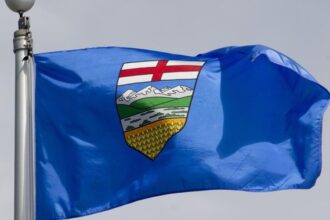As smoke blankets the horizon and flames encroach upon their ancestral lands, thousands of First Nations community members across Northern Ontario find themselves caught in what officials are calling the province’s most severe early wildfire season in decades.
The unfolding crisis intensified this weekend as approximately 2,700 residents from Eabametoong First Nation, located 350 kilometers north of Thunder Bay, were forced to evacuate their homes when a wildfire dubbed RED068 drew dangerously close to their community. The flames, now spanning over 10,500 hectares, represent just one of 48 active wildfires currently burning across Northern Ontario, according to provincial authorities.
“This is not just about leaving homes behind—these are our traditional territories, our cultural spaces, places where generations have lived,” said Chief Solomon Atlookan of Eabametoong First Nation in a statement released Saturday. “The community is experiencing profound distress as families are separated and displaced during this emergency.”
The Ontario Ministry of Natural Resources and Forestry reports that weather conditions have created a perfect storm for fire propagation, with unusually dry conditions and strong winds accelerating the spread of flames. Aviation, Forest Fire and Emergency Services spokesperson Shayne McCool noted that the province has already recorded 343 wildfires this year—nearly double the ten-year average for this point in the season.
For evacuees, the journey to safety has been fraught with logistical challenges. Many have been airlifted to host communities including Thunder Bay, Timmins, and Kapuskasing, where emergency shelters are rapidly approaching capacity. Indigenous Services Canada has committed federal resources to support evacuation efforts, but community leaders express concern about the adequacy of accommodation arrangements.
“We’re seeing significant strain on host communities as they work to shelter evacuees with dignity,” said NAN Grand Chief Alvin Fiddler in an interview with CO24 News. “This highlights the critical need for comprehensive emergency response planning for remote First Nations communities who face these threats with increasing frequency.”
Climate scientists have warned that Canada’s northern regions are experiencing warming at nearly three times the global average, creating conditions that favor more frequent and intense wildfire seasons. The current crisis follows the devastating 2023 wildfire season, which set records for area burned and displacement across the country.
Provincial Emergency Preparedness Minister Rob Flack announced additional resources being deployed to affected areas, including 200 firefighters from other provinces and specialized equipment to combat the spreading fires. However, with forecasts predicting continued dry conditions and the possibility of lightning strikes, officials acknowledge the situation may worsen before improvement can be expected.
For affected communities, the evacuation represents more than physical displacement—it threatens cultural continuity and exacerbates existing socioeconomic challenges. Many evacuees report leaving behind essential items, traditional medicines, and in some cases, irreplaceable cultural artifacts.
“When our people are evacuated, we’re not just relocating bodies—we’re disrupting spiritual connections to land that form the foundation of our identities,” explained Elder Margaret Oskineegish, who was among those evacuated from Eabametoong. “The trauma of these repeated displacements compounds historical injustices our communities have faced.”
As politics intersects with disaster response, questions emerge about long-term solutions. Indigenous advocates are calling for increased investment in community-based emergency preparedness, traditional fire management practices, and infrastructure improvements that would make remote communities more resilient to climate-related threats.
As this crisis unfolds in Northern Ontario, one question becomes increasingly urgent: How can Canada reconcile its climate action commitments with the immediate and escalating needs of First Nations communities who find themselves on the frontlines of our changing environment?


















